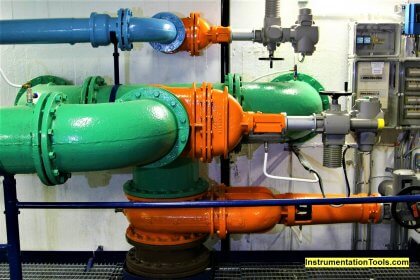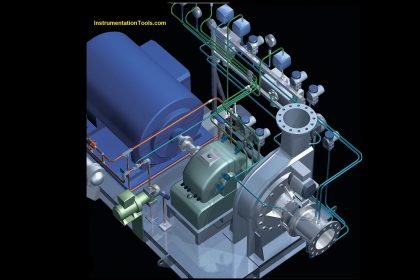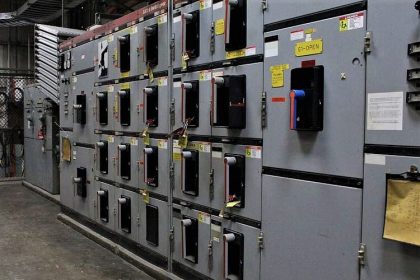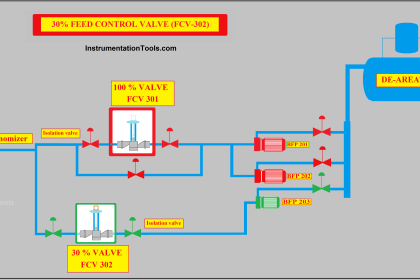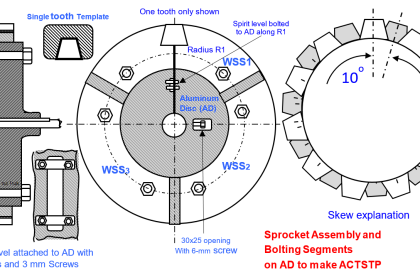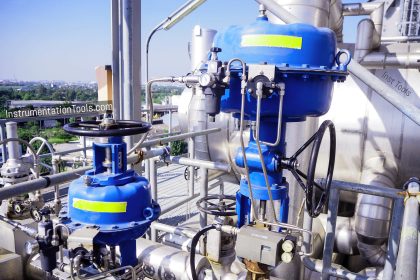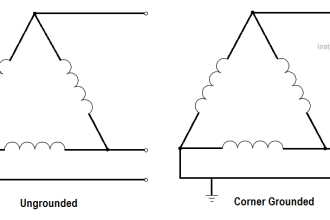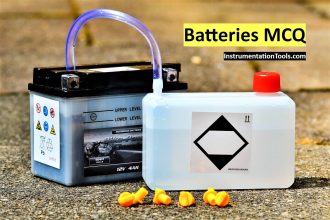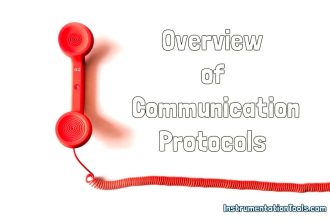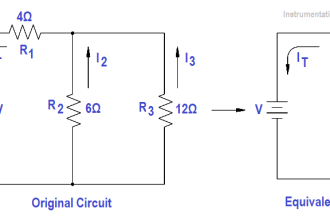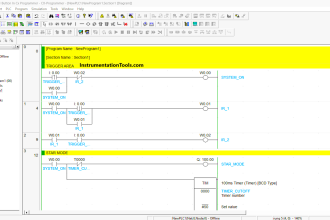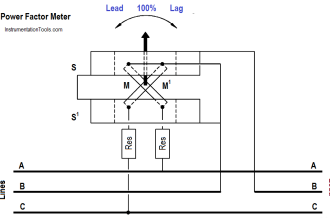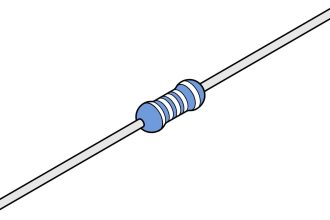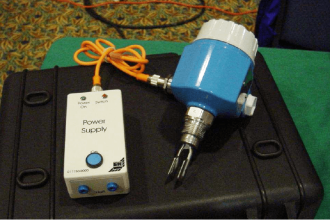Root Cause Analysis (RCA): The Refrigeration Compressor Turbine (K-901 T) Not-tripping when needed Trip Throttle Valve threatened potential compressor wrecks eliminated.
| Article Type: | Root Cause Analysis (RCA) |
| Category: | Mechanical |
| Equipment Type: | High Speed, Hi KW Major Rotating Machines |
| Author: | S. Raghava Chari |
Note: This root cause analysis (RCA) is from real-time scenarios that happened in industries during the tenure of one or two decades ago. These articles will help you to improve your troubleshooting skills and knowledge.
Problem
The Refrigeration Compressor Turbine (compressor tag is K-901 T) TTV (Trip Throttle Valve) did not trip close on a vessel Lo-Lo level instrument signal two years after plant startup.
The author instrument engineer then checked and found the instrument signaled correctly, the solenoid de-pressured the power cylinder instantly, yet the knife edge holding the TTV open did not retract. I.E., the instrument performed flawlessly, yet the TTV (Trip Throttle Valve) did not trip.
He informed the rotating machine engineer to investigate and correct the found TTV defects. He could not find any. Hence, the plant manager ordered simulation check turbine TTVs before start.
The valve passed the simulation test. Hence, the plant crew started K-901 T and restored ammonia production after 4-hours of lost production.
The TTV did not trip on few occasions; every time mechanical and instrument crew found nothing wrong. The author repeatedly pointed out to his 3‑predecessor maintenance managers the TTV not tripping when required could wreck the K‑901, even cause fatal accidents, and shutdown the entire plant a year or longer, citing the Murphy Law, “if anything can happen it will happen”.
He repeatedly pointed out that the instruments correctly initiate the trip signals but the TTV does not trip due to some TTV problem. Hence requires deep study by the mechanical crew and immediate correction. But the problem persisted.
Hence, the author on becoming the maintenance manager studied the TTV drawing to find out possible causes for the 10-yearlong persisting problem. It shows 4-Nos 1.5 mm dia drilled holes on the plug; it equalizes the plug top and bottom pressures; hence, he named these pressure-equalizing holes (PEH).
Thanks to PEHs the plug thrust is zero at 0-max steam flows for the negligible load on the knife edge that holds the TTV open, for easy de-latch and the actuator to instantly close the valve the TTV on knife-edge de-latching. Jotting down the root cause analysis queries and answers as under-identified the root cause and enabled its removal:
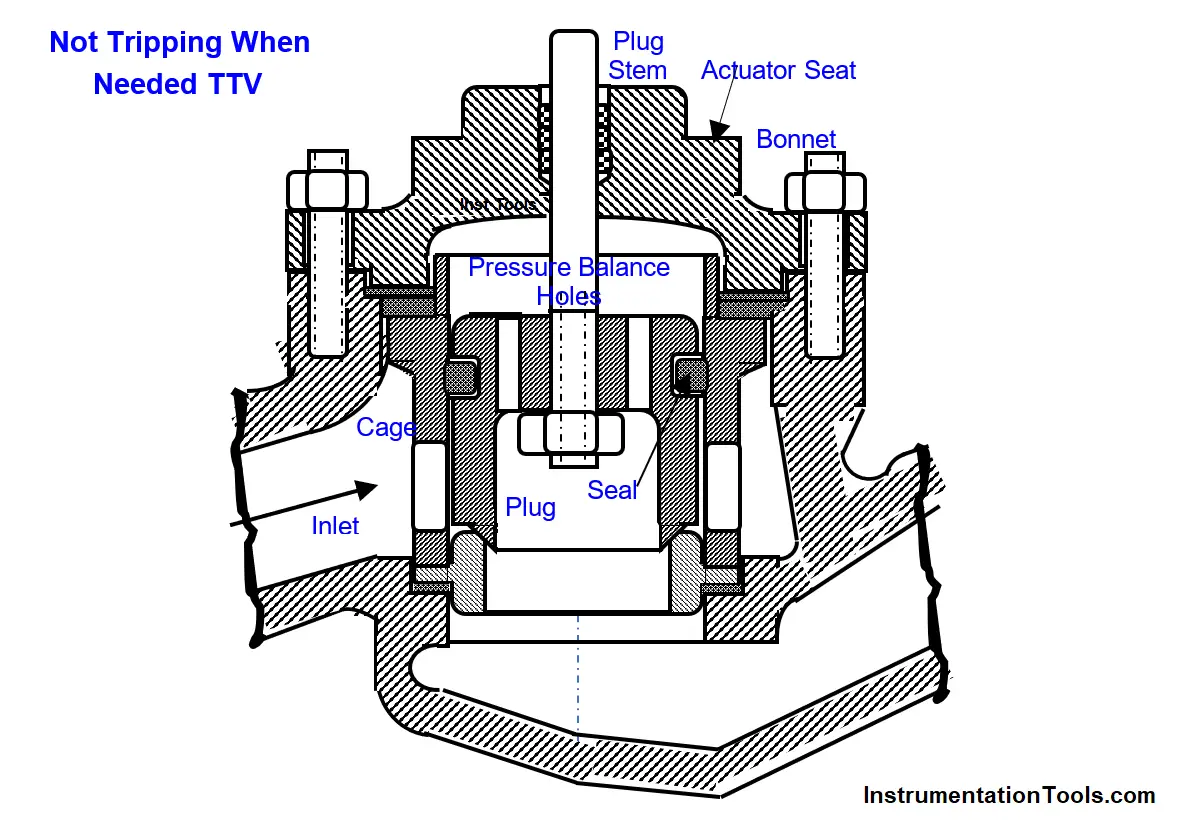
Root Cause Analysis
Here Q is the RCA query and A is the RCA answer.
Q: Since when is the problem?
A: Perhaps 2-3 years after commissioning – not certain because of records non-availability
Q: Do you test the TTV before the turbine starts?
A: Yes, we PB trip the TTV (Trip Throttle Valve) and by simulating the hi-hi level of a process vessel. It trips fine during these tests
Q: Was K-901 T running during your simulation tests?
A: No Sir; Operators don’t allow us fearing process upsets
Q: Why do the TTV trips during no steam flow but not when steam flows?
A: Oh! during no steam flow no ΔP → no knife-edge load → it easily de-latches → TTV trips. With steam flow → maybe high plug thrust → hence no TTV trip on instrument signal
Q: Why high thrust during steam flow conditions
A: Maybe plugged PEHs; it is easy because, just 1.5 mm too small dia; in addition, K-901 T needs frequent condensate wash to wash off the steam carried over salt deposits on the internals.
This RCA was an eye-opener; the plant manager instantly appreciated the potential risks and ordered a shutdown (SD) two days later to prepare to handle as many jobs as possible during the SD.
The TTV dissembling crew reported no 1.5 dia holes on the plug. However, as the TTV showed them, the author asked an inspection engineer to double-check.
The plug top emery cleaned and bright light illuminated the holes existence evidence was visible. The author got the holes drilled 3-mm hoping they won’t plug again.
In addition, the author is convinced doing TTV simulation tests with the steam flow to the turbine as it is more realistic and would detect TTV not tripping with certainty.
Root Cause Elimination Benefits
The TTV passed the ST Governor control RPM simulation test. It tripped 6 m later on a vessel hi-hi level signal, assured its reliability, and put everyone’s mind at peace.
This incidence RCA takeaway is: devise realistic and as close to operating conditions as possible simulation tests. Be aware of potential risks from continuing a problem; persist with the root cause analysis and eliminate the problem ASAP.
Run plants only after assuring all reliable safety systems. Connect unusual plant incidents with the problem in hand; in this case, the steam salt deposits caused frequent K-901 T condensate washes to relate to PEH plugging also.
Author: S. Raghava Chari
Do you face any similar issues? Share with us through the below comments section.
If you liked this article, then please subscribe to our YouTube Channel for Instrumentation, Electrical, PLC, and SCADA video tutorials.
You can also follow us on Facebook and Twitter to receive daily updates.
Read Next:
